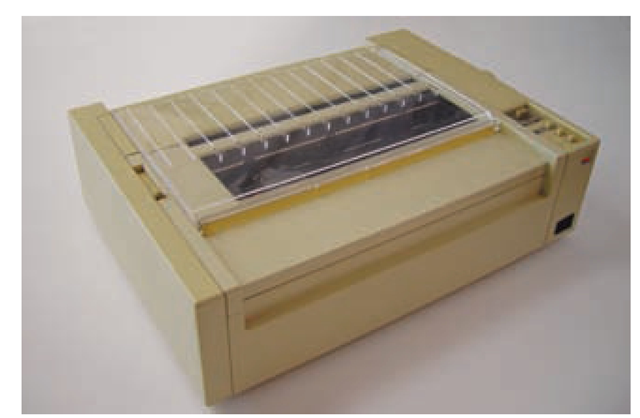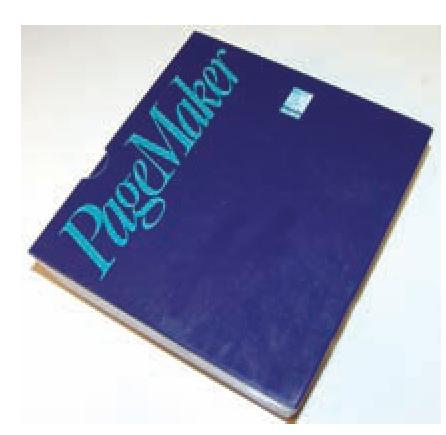Objectives
• Learn definition of desktop publishing.
• Explore history of DTP.
• Discover differences between various operating systems.
• Learn differences between various software packages used in digital desktop publishing.
• See how input and output devices are used in DTP.
• Learn how networks are connected and made secure.
Introduction
You may have noticed that the title of this topic, "Digital Desktop Publishing" also includes the phrase "The Business of Technology."
The word "digital" indicates that you will not be limited to just the study of print. All forms of desktop publishing (DTP), including that which is used on the Web, will be included. The word "business" helps you to understand that the focus will be on business applications rather than the personal use of the technology. Working together, these two phrases give you a clear idea of what you are about to learn.
The term desktop publishing describes the process of producing a document using a personal computer. DTP software, once called page assembly software, makes it possible to combine both print and graphics on a single page. Once a user creates a desktop publishing document, he or she can then print a copy using a computer printer, a photocopy machine, or a professional press. DTP also provides the option of creating a digital publication. This allows readers to view a document using a computer monitor rather than a paper copy. DTP requires a wide variety of skills, including an understanding of typography, graphics, layout, and business expectations.
The term "digital" demonstrates the advancements made in desktop publishing. No longer is it just about creating a nice-looking brochure to reproduce using a photocopier. Today’s digital desktop publishing is about using advanced image technology to create the same brochure.It is about creating both the print and web versions of that same document. Most importantly, it is about choosing the right tools to make your business more profitable. Welcome to the new world of business using digital desktop publishing skills.
Desktop publishing is the use of word processing software or specialized desktop publishing software on a personal computer to create a document in which graphics and text enhance the message.
DTP is an acronym for desktop publishing.
History
Desktop publishing began even before the introduction of the personal computer. It started with the IBM Selectric™ (1961) and its "golf ball" print head, as shown in Figures 1.1 and 1.2. These allowed users for the first time to change with ease the type style of their text. Before the Selectric, typewriters were of two types: elite (12 characters per inch) and pica (10 characters per inch). Whatever style your typewriter came with was the style in which you created text. Adding graphics to a document, however, required gluing or waxing the image onto an already typed page.
Macintosh
With the arrival of the Apple Macintosh computer and the Image-Writer printer in 1984, as shown in Figures 1.3 and 1.4, the world of desktop publishing began to change. The Macintosh used a GUI (graphical user interface) to simplify the way computers were used. Earlier computers required users to key in text to access functions. The Mac introduced the use of icons, windows, and menus.
Previously only codes built into a document indicated changes in appearance. Now WYSIWYG (what you see is what you get) took over in programs such as MacWrite. Suddenly it was possible to choose not only font style but also size and attribute. It was also possible to see those changes on the screen. Graphics could be added digitally to a document in a limited way and viewed in place. Printing in landscape or portrait became an easy option.
Figure 1.1
The IBM Selectric provided font choices and sizes that were not available on other typewriters.
Figure 1.2
The Selectric "golf ball" element could be replaced easily to change type font and size.
GUI , an acronym for graphical user interface; indicates that pictures rather than text allow the user to work with the computer.
WYSIWYG, an acronym for what you see is what you get; means that the image that appears on a computer display is the same as the printed version.
Figure 1.3
The introduction of the Macintosh and GUI opened the way to a new world of computer use.
Figure 1.4
The Apple ImageWriter made it possible to print more than just text.
Figure 1.5
Thunderscan developed an early scanner that replaced the printer ribbon in an ImageWriter.
Figure 1.6
Aldus PageMaker was the first desktop publishing program available for use on a computer.
PageMaker was the first true desktop publishing software developed for use on a computer.
An operating system (OS) is the software that allows a computer to function. It includes features such as how a monitor displays an image and how files are accessed.
Windows is an operating system marketed by Microsoft that is used on computers generally identified as PCs.
Linux is an open source operating system that generally runs on PCs.
PC is an acronym for a personal computer. Generally, PCs are computers that use the Microsoft Windows operating system.






